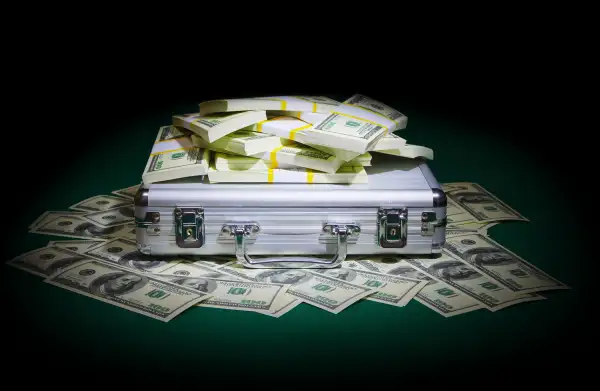The Case for Getting Rid of $100 Bills

When was the last time you used a $100 bill? Odds are, not recently. As more consumers opt for credit cards and electronic payment systems, using cash for large transactions is becoming less frequent. But even as use of paper currency is declining, a huge amount remains in circulation—some $4,200 in cash for every person in the United States. And a whopping 80% of that cash is in the form of $100 bills.
So if all those Benjamins aren’t being used by consumers, where are they? No one knows. Only about 10% of all U.S. currency can be fully accounted for by government regulators. But data suggest that the bulk of those $100 bills are being used primarily to fuel the underground economy.
That’s why it’s time to end the $100 bill, says Harvard professor Ken Rogoff, author of a new book, “The Curse of Cash.” Rogoff advocates gradually phasing out the $100 bill and eventually $50s and possibly $20s. He would keep smaller bills indefinitely for convenience. “I want a less-cash society, not a cashless one,” he says. Here are three core arguments in the case against cash.
You don’t use $100s, but criminals do.
“Cash is used in less than half of all transactions, and it represents only about 12% of the value,” says Rogoff. The majority of those cash transactions are $20 or less. Instead, big bills are used primarily to facilitate criminal enterprises, such as money laundering and drug trafficking, as well as garden-variety tax evasion.
As anyone who has watched “Breaking Bad” knows, large denominations are easier to carry discreetly than small ones. A million dollars in $100 bills weighs about 22 pounds, but the same amount in $10 bills would weigh 220 pounds. “There may be a legitimate reason to carry a million dollars in a suitcase, but not on a regular basis,” says Rogoff.
Cash is also used heavily by small businesses, and studies show that only about 37% of that income is reported. Overall 15% of all income taxes are uncollected, which amounts to about $500 billion per year, according to IRS estimates. State and local taxes might add up to another $200 billion. “If cash no longer enabled these forms of tax evasion, that would add up to a significant increase in revenue,” Rogoff says.
We’re already moving to a less-cash society.
As more and more consumers shift to digital payment options, cash usage will continue to dwindle. Other developed nations have already started the transition. Sweden, which has widely used electronic systems, has removed cash and ATMs from bank branches. Denmark, Norway, and Finland are making similar moves. And the European Central Bank announced earlier this year that it would phase out the 500-euro banknote by 2018 because, like the U.S. $100, it has been a preferred currency for criminal activity.
But cash still has its advocates. Conservatives and libertarians dislike the idea of getting rid of paper currency, since transactions would be easier to monitor, raising privacy concerns. And many worry that less cash in circulation would give more control to the Federal Reserve Bank to impose negative interest rates, which would penalize savers by shrinking their bank balances.
Policymakers are starting to listen.
Ending the $100 bill isn't a brand new idea, and government officials have resisted it for years. Rogoff first wrote a paper about problems with large denominations in 1998, and other economists supported it.
Still the notion is gaining popularity, including the approval of some prominent economists. Former Treasury Secretary Larry Summers recently came out in support of a move away from cash, as has Harvard president emeritus Peter Sands and Citigroup economist Willem Buiter.
"At some point we'll reach a tipping point," says Rogoff. The days of the $100 may be numbered, in smaller bills.
